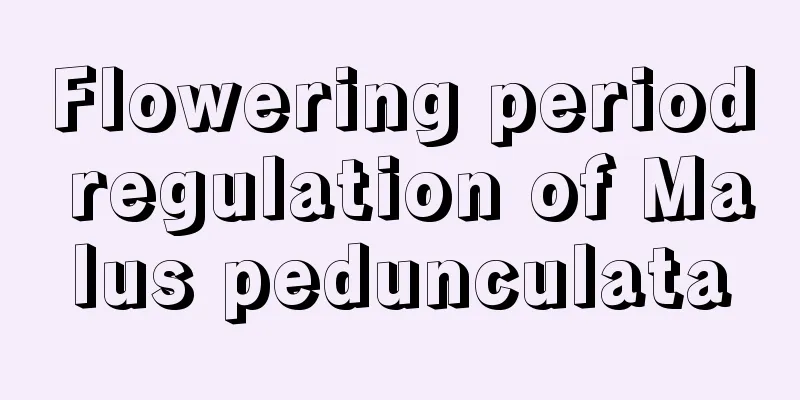How to manage and care for potted flowers

RepottingSome potted flowers can be repotted after being taken out of indoors or sheds. Types include: camellia, azalea, rubber tree, Schefflera, Araucaria, Strelitzia, orchids, Dracaena, Areca palm, Fishtail palm, etc. Plastic surgeryFor white orchid, Milan, Michelia, Asteraceae, camellia, etc. that have just been moved outdoors, you can prune away dead and weak branches to keep them in good shape; for potted plum, wintersweet, Pyracantha, crabapple, etc., the overly vigorous branches can be topped to promote the healthy development of the plant shape; for roses, weeping crabapples, peonies, Erythrina, Deutzia, etc. that have already bloomed, they can be pruned to reduce the branches. WateringAs the temperature rises in May, you should increase the amount of watering for potted flowers in the courtyard, which can be controlled to once a day. When the weather is fine, remember to spray water around the plant to increase the air humidity. If there is continuous rainy weather, check the potting soil regularly. If there is water accumulation in the pot, drain it in time and repot it as soon as possible. In the northern regions, when watering potted flowers that prefer acidic soil conditions such as gardenia, camellia, azalea, white orchid, Michelia, jasmine, daphne, cycad, bamboo palm, and monstera, you can add a small amount of ferrous sulfate to the water to prevent physiological yellowing of the plants. For cyclamen, calla lilies and other plants that have entered a dormant state, stop watering them and place them in a moist and cool place. FertilizationMay is the vigorous growing season for potted flowers. For those species of flowers and trees that are worth viewing for their flowers, fruits and fragrance, such as white orchid, Milan, rose, daisy, gardenia, jasmine, camellia, plum, wintersweet, peony, etc., apply a balanced compound fertilizer with nitrogen, phosphorus and potassium once every half month. You can also add a small amount of potassium dihydrogen phosphate to the cake fertilizer water to facilitate the plant's recovery growth, flower bud differentiation, or continuous bud formation and flowering. For those species that are mainly for viewing leaves, such as Monstera, Spring Feather, Angel Philodendron, Rubber Tree, Red (Green) Gem, Cycas, Bamboo Palm, Hulk, Green Emperor, Aspidistra, and Guangdong Dieffenbachia, apply fermented cake fertilizer water once every half month; for foliage plants with stripes, such as Golden Edged Tiger Tail, Colorful Pineapple, Golden Heart Brazilian Iron, Tricolor Cordyline, Demi-Gondola, Croton, Coleus, White Butterfly Syngonium, Alpinia officinalis, Mosaic Cassava, Golden Peach Leaf Coral, Golden Edged Lucky Bamboo, Net-grass, Mosaic Schefflera, Golden Pothos, and Hanging Bamboo Plum, while applying dilute cake fertilizer liquid, apply 0.2% potassium dihydrogen phosphate externally on the roots to make their leaf color appear more vivid and bright. ShadeIn May, it is advisable to move potted plants that prefer semi-shade or shade into the shade shed or under the shade of trees, such as Monstera, Bamboo Palm, Arrowroot, Spring Feather, Hulk, Red (Green) Gem, Green Emperor, Delfia, Syngonium, orchid, azalea, camellia, sasanqua, Strelitzia, Pearl Orchid, Clivia, Bulbous Begonia, Bamboo Begonia, Heavenly Bamboo, Chlorophytum, Kidney Fern, Areca Palm, Anthurium, Peperomia, Green Ivy, Boston Fern, etc. For light-loving flowers and trees, they must be given sufficient light, such as cycads, pomegranates, roses, jasmine, wintersweet, pyracantha, and broad-leaved magnolias. Pest and disease preventionFor potted roses, floribunda roses, miniature roses, etc. planted in the courtyard, attention should be paid to the prevention and control of powdery mildew and brown spot disease. If leaf-feeding pests are found, they should be promptly controlled with 1000 times diluted 90% dichlorodiphenyltrichloroethane crystals. The citrus swallowtail butterfly larvae that appear on plants such as taro, kumquat, bergamot, lemon, etc. of the Rutaceae family should also be captured and killed in time or controlled with pyrethroids. Potted plants suitable for balcony display in May are suitable for display on the balcony. The types of potted ornamental plants that have entered the flowering period include: peony, iris, dwarf lily, amaryllis, jasmine, pomegranate, gloxinia, snapdragon, phlox, dianthus, New Guinea impatiens, June snow, crabapple, and sea daffodil, etc. In addition, other foliage plants that can be used to decorate indoor balconies include: Heavenly Bamboo, Golden Peach Leaf Coral, Aspidistra, Araucaria, Bamboo Palm, Areca Palm, Rubber Tree, Angel Philodendron, Golden Heart Brazilian Iron, Podocarpus, Schefflera, Cycas Revoluta, and Cycas Revoluta.
|
<<: Amazing tips for growing flowers at home (Continuation)
>>: Six rules for growing flowers
Recommend
How to repot cold water flowers
Best time to repot The best time to repot is spri...
How to hydroponically cultivate lilies and tips for hydroponics
1. Prepare the container Before growing lilies hy...
How much does coriander cost per pound (price introduction)
1. Price Introduction Its price is unstable. For ...
The difference between the fortune tree and the happiness tree
1. Tree shape difference The fortune tree is a me...
How long does it take for rubber tree cuttings to take root?
Rubber tree cutting rooting time It is best to pr...
The role and efficacy of kudzu
1. Breast augmentation Kudzu has the effect of br...
Can I plant a Podocarpus tree in front of my door?
Can I plant a Podocarpus tree in front of my door...
Cultivation methods and precautions for miniature roses
Miniature roses are very easy to grow and are wel...
How to fertilize peppers to increase yield (how to fertilize peppers to increase yield)
If peppers are grown and managed well, the fruiti...
During his four years in college, he turned his dormitory into a small garden. Even the dormitory manager must have been so envious!
Science-oriented man's passion for growing fl...
Planting method and later maintenance of Viburnum
Viburnum harvest The fruits of Viburnum are easy ...
Cultivation methods and precautions of Tiger Pilan
1. Soil The roots of Sansevieria are fleshy roots...
Can the leaves of Clivia be cut off?
1. Is it possible to cut leaves? When caring for ...
Large-scale drying up and leaf loss: how to save dying plants
1. Lack of water Symptoms: Leaves change color, t...
Cultivation methods and precautions of Shixiantao
Water requirements When planting stone peach, you...









